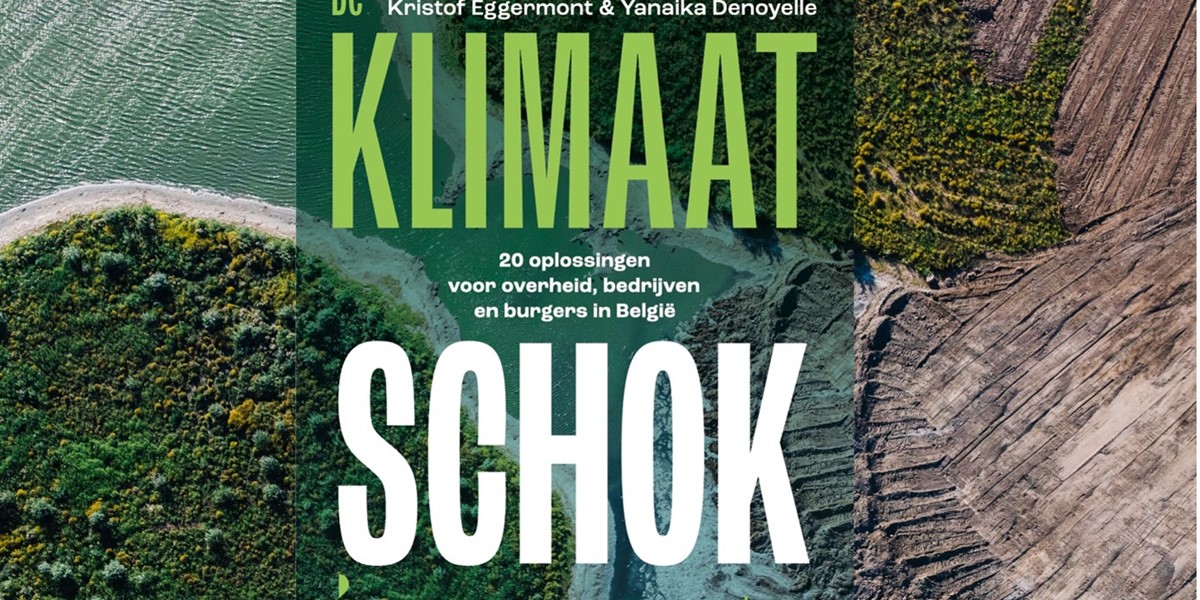Yanaika obtained an Msc in Bioscience engineering with a focus on Environmental Technology. She then deepened her knowledge on climate change through a second Msc in Carbon Management at the University of Edinburgh.
10 things we learned after one year of Klimaatschok-lectures

One year ago, Econopolis's Geert Noels, Kristof Eggermont, and I (Yanaika Denoyelle) released 'De Klimaatschok'. This book outlines 20 climate solutions to help Belgium achieve net-zero emissions and explores opportunities to enhance our living environment and economic standing. We transformed the book's content into a lecture series, engaging with government organizations, various citizen groups, and a diverse range of corporations. Each session fostered a dialogue with the audience, deepening our understanding of the diverse perspectives and challenges associated with climate transition. After a year of these interactions, we've distilled 10 key lessons learned.:
- The topic of climate change is high on the agenda. In all the different lectures, it was clear that climate change has become a topic that is given significant weight. Often our lecture was part of a broader event on topics like sustainability, climate, or future economic trends. We were happy to discover a sincere concern and willingness to act in nearly every lecture we gave.
- Key concerns of citizens center around the financial impact of the climate transition, and how climate measures will affect income inequality. The perception that Europe is alone in transitioning towards climate neutrality is still very prominent, prompting questions about fairness and effectiveness.
- A major concern for (industrial) corporations is the future availability of abundant and affordable low-carbon electricity. Without signals from the government, strategies are on hold until a clear path is set out and the necessary commitments are made by policy makers. A related concern is the very real possibility of deindustrialization without the necessary interventions.
- Working towards climate neutrality should not be an isolated effort. As organizations, different layers of the government, and citizens are working towards climate neutrality, it is easy to be so immersed into our environment that we forget that others are doing the same. Cooperation is relevant for two important reasons. First of all, many synergies can be discovered in connecting all the actors in society. For example, the steel sector and horticulture can work together by using residual heating from the furnace in their greenhouses. Secondly, there are short-term resource bottlenecks that can go unnoticed: over the course of the transition, the supply of renewable energy, biomass, hydrogen, … will be limited, and while there may seem to be enough hydrogen for one sector, all sectors thinking the same thing will eventually lead to supply issues. Coordinating all these different sector strategies is extremely important.
- One of the key messages in our presentation is that the climate transition will be a mosaic of different solutions: it’s about renewable energy AND hydrogen, decarbonizing industrial activity AND behavioral changes, … This message was affirmed on multiple occasions. Once climate transition strategies are composed, it quickly becomes apparent that for a swift and affordable transition there is not one ideal solution but a basket of various solutions.
- The green growth and degrowth movements have become very polarized while there are many solutions that are supported by both movements, such as sharing economies, eliminating wasteful consumption, phasing out fossil fueled cars, renewable energy, … It is crucial to also highlight these similarities and work on these solutions straight away.
- There is great appreciation for a positive and solutions-oriented, yet sufficiently nuanced, story. The audience is very familiar with climate fatigue and the positive approach of de Klimaatschok is highly appreciated.
- The climate diet – a diet where cheese and beef consumption are reduced – is either the best or worst received solution. It’s a very sensitive solution, as it is perhaps the solution that comes closest to our culture. On the other hand, the solution is perceived as a great way to honor Belgian culture while still reducing our food carbon footprint.
- Circularity emerges as the most universally accepted climate solution. Across the board—from citizens to governmental organizations and corporations—there is a consensus on the need and benefits of transitioning towards a circular economy.
- The importance of social justice, biodiversity and climate adaptation are also widely agreed upon. We had to limit ourselves to a 200-pages long book, meaning the focus is mostly on climate mitigation. As such, we are always happy to get questions from the audience around social justice, biodiversity and adaptation.
In summary, the lectures we gave were both educational, insightful, and inspiring. There is still much work to do but the sincere engagement of organizations on every level is incredibly encouraging.
